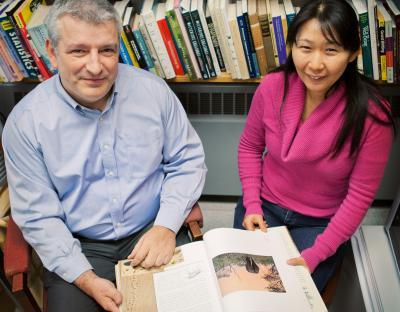Through state-of-the-art ancient DNA and protein research and an extensive investigation of historical literature, researchers have determined a 300-year-old type specimen for Asian elephants is actually an African elephant.
In a study in the Zoological Journal of the Linnean Society, led by Enrico Cappellini and Thomas Gilbert in Denmark, researchers have established a new specimen to represent the species, which is likely the remains of Hansken, the famous performing elephant from the 1600s.
In 1758, Carl Linneaus named elephants Elephas maximus in his definitive work, Edition 10 of the Systema Naturae. In his description, he cited several "syntypes" or examples of elephant specimens in Europe, including an elephant fetus as well as a skeleton described by John Ray, the famous 17th century naturalist.
Later, African elephants were separated into the genus Loxodonta. Asian elephants remained known as E. maximus, and Linnaeus' original syntypes became associated with Asian elephants exclusively.
But historical evidence and physical characteristics indicated that the fetus was most likely an African elephant, said Alfred Roca, a professor of animal sciences and member of the Institute for Genomic Biology at the University of Illinois, who led Illinois's efforts in the study.
Researchers also found three instances where a single nucleotide (represented by an A, T, C, or G) was different in the genetic code for Asian and African elephants. Again, the fetus matched the Loxodonta genus, not Elephas.

This is Alfred Roca, Assistant Professor of Animal Sciences (left) with Yasuko Ishida, Research Specialist, Department of Animal Sciences, University of Illinois at Urbana-Champaign.
(Photo Credit: Photo by Kathryn Coulter, courtesy of the Institute for Genomic Biology)
Yasuko Ishida, a research specialist in Roca's lab, compared the mitochondrial DNA (mDNA) of the fetus to the mDNA of African elephants from different regions of Africa.
"Using a database with DNA from more than 650 African elephants, Ishida found the fetus was from West Central Africa," Roca said. "That is actually the place where historical records suggest the fetus was collected."
Researchers scrutinized references by Linnaeus to find a lectotype, which is a specimen that serves as a single type specimen for a species that was originally described by a set of syntypes.
They discovered Ray's detailed description of an elephant skeleton that he observed in Florence, Italy, in 1664. Today the specimen is at the National History Museum of the University of Florence.
Due to the specimen's size, bone structure and teeth wear, researchers determined that the skeleton was a 25 to 30-year-old female Asian Elephant. DNA analysis confirmed that the skeleton belongs to E. maximus.
In accordance with the International Code of Zoological Nomenclature, researchers designated the elephant skeleton in Florence, catalogue number MZUF-734, as the lectotype of E. maximus to "preserve the traditional understanding and application of this name to the Asian elephant." This change will go into effect in January of 2014.
Source: Institute for Genomic Biology, University of Illinois at Urbana-Champaign